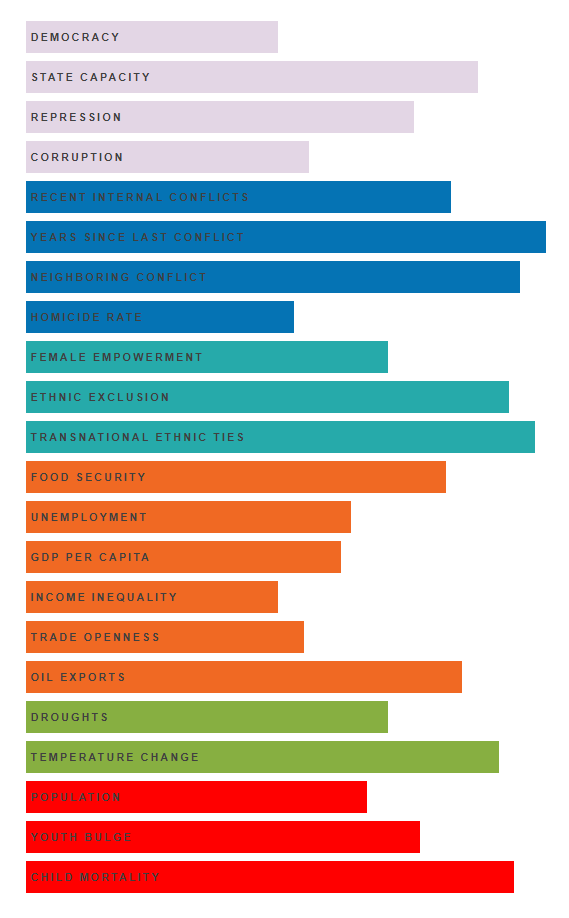The GCRI covers 22 variables in 6 dimensions (social, economic, security, political, geographical/environmental, demographic) reflecting structural conditions correlated to the occurrence of violent conflict. The GCRI uses historical data since 1991 to train the model, which is then used to forecast conflict risk in the next 1-4 years. Conflict risk scores relate to the following types of conflict: (1) Any conflict, (2) State-based conflict, (3) Non-state conflict and (4) One-sided violence.
 Variables and dimensions of the GCRI model
Variables and dimensions of the GCRI model
Several model design decisions, including definition of the dependent variable, predictor variable selection, data imputation, and probability threshold definition, have been set in light of the model’s direct application in the EU policy support on conflict prevention. While the GCRI remains firmly rooted by its conception and development in the European conflict prevention policy agenda, it is validated as a scientifically robust and rigorous method for a baseline quantitative evaluation of armed conflict risk.